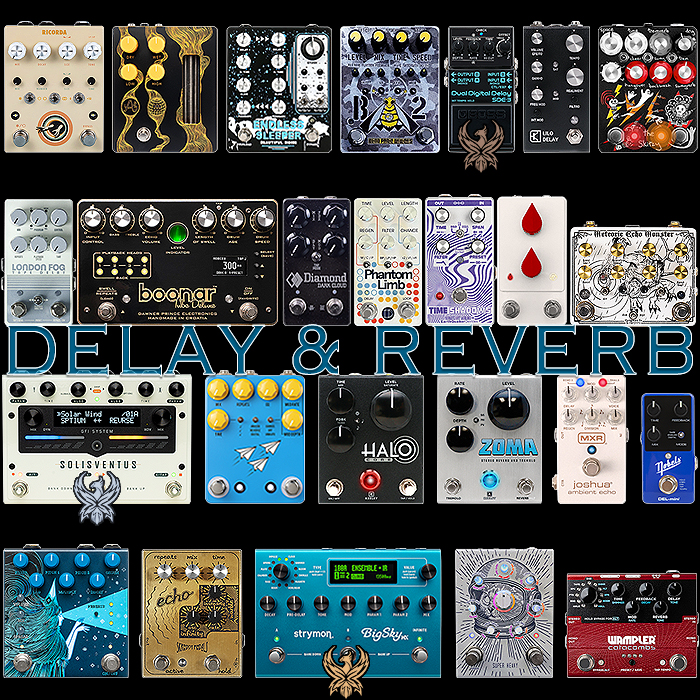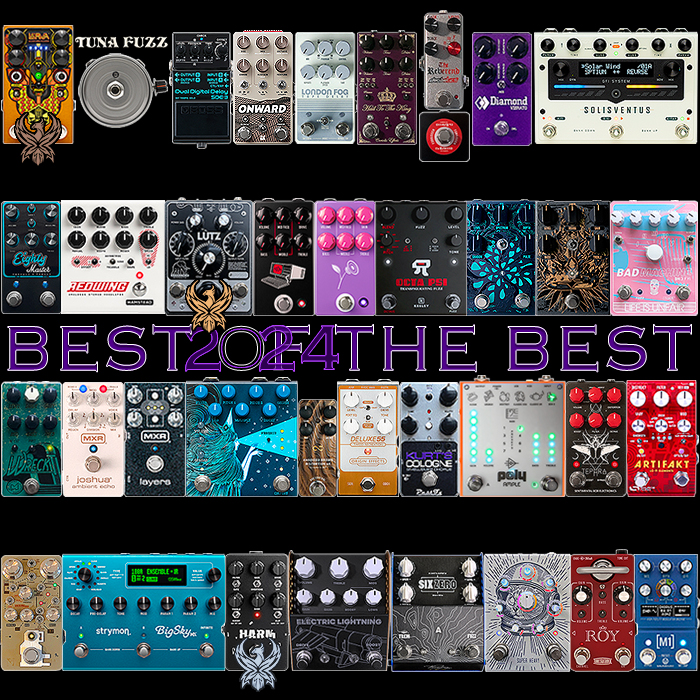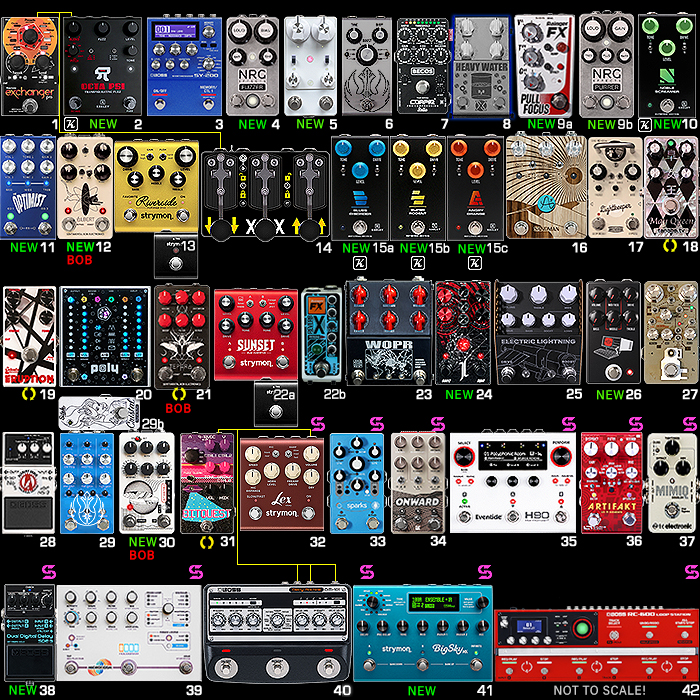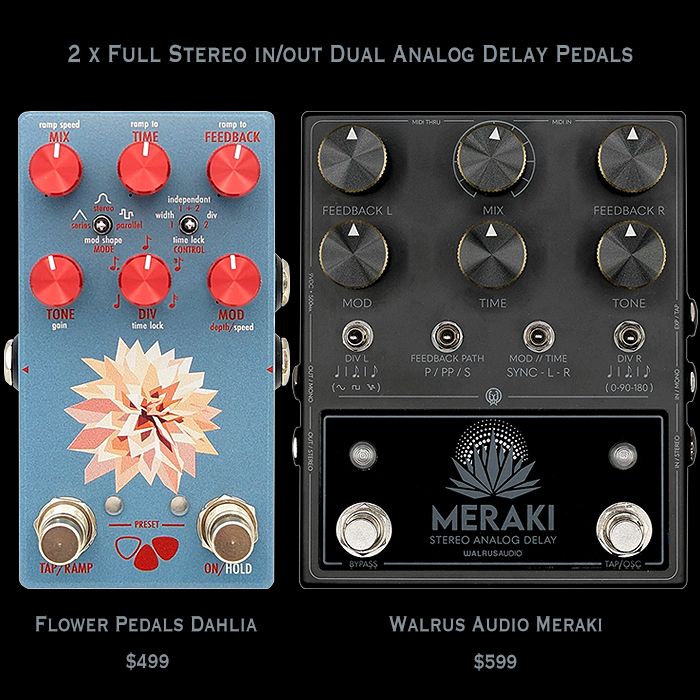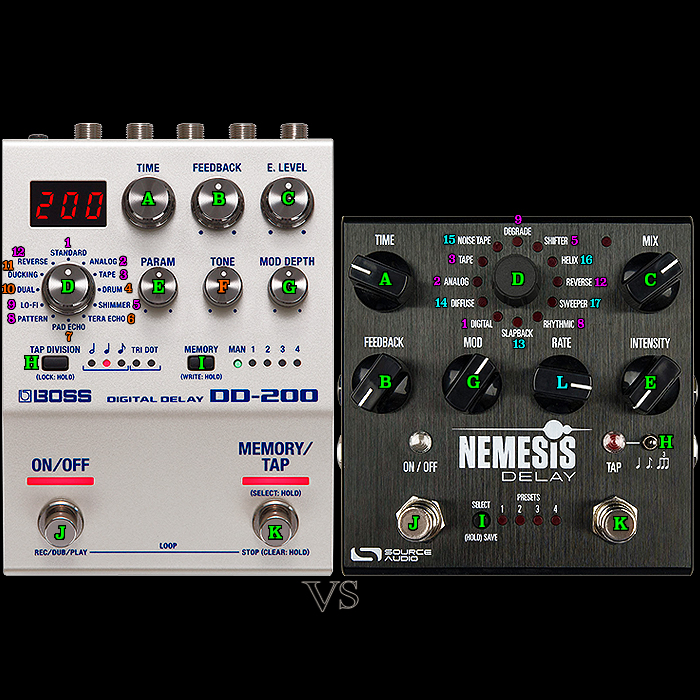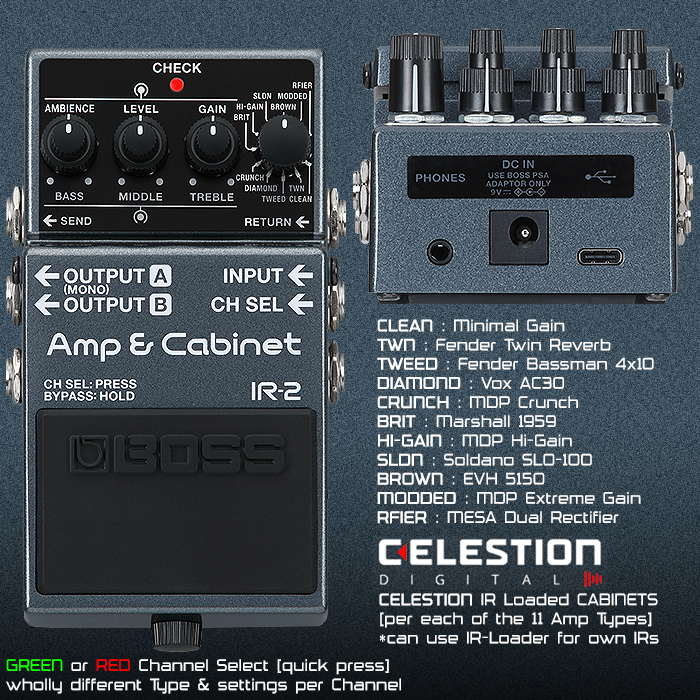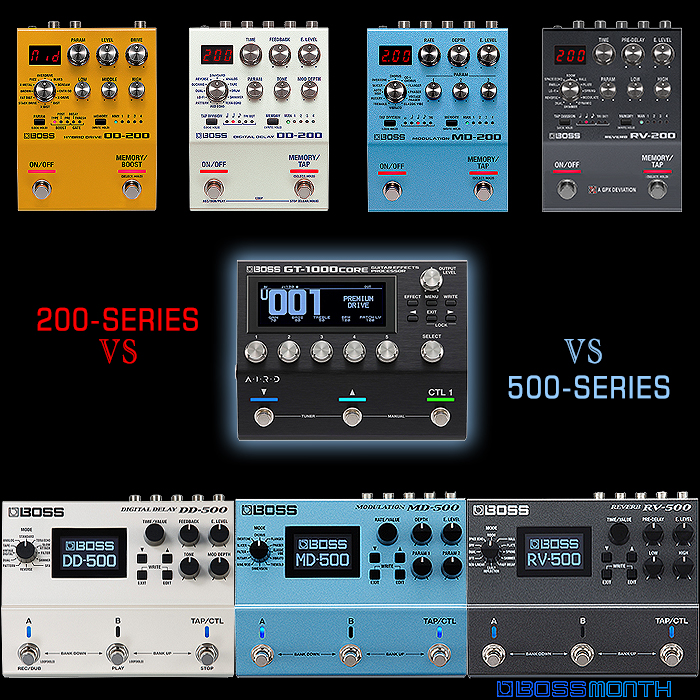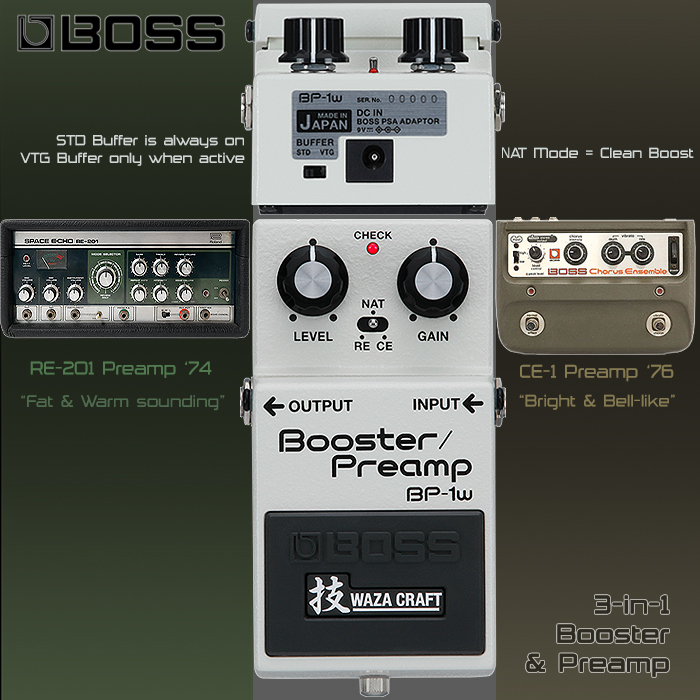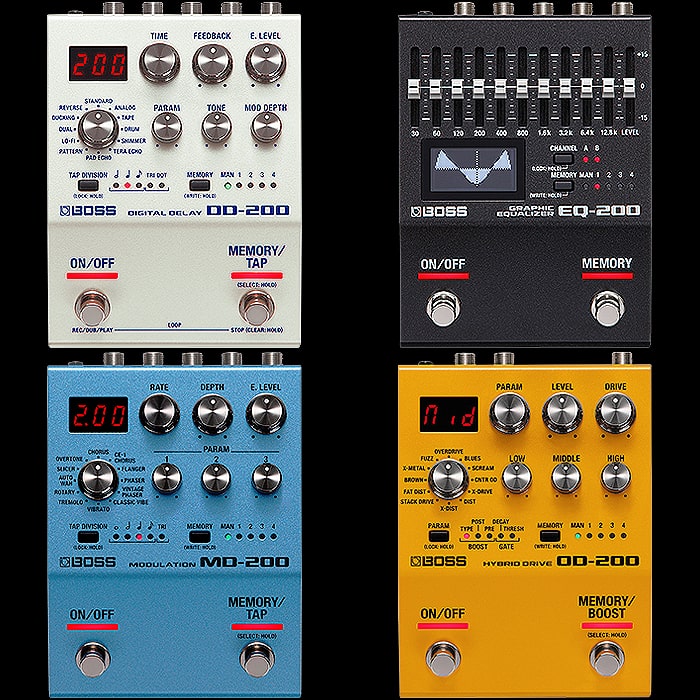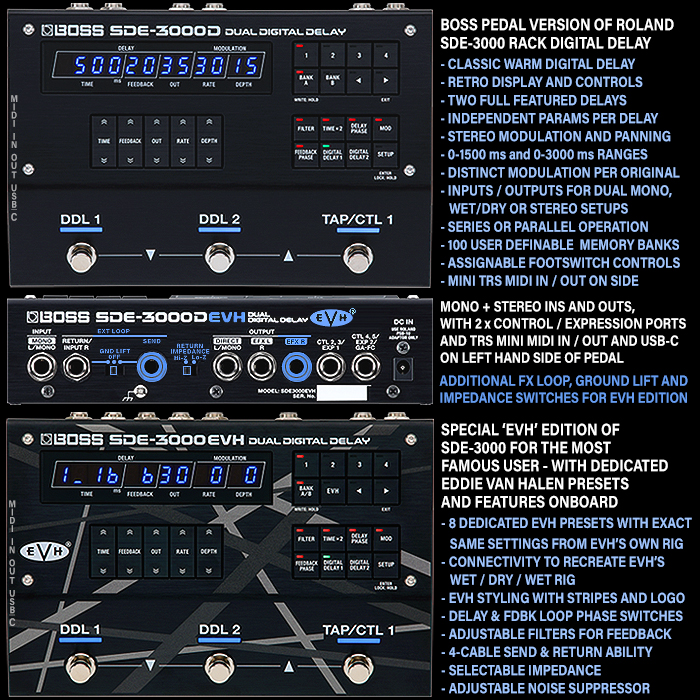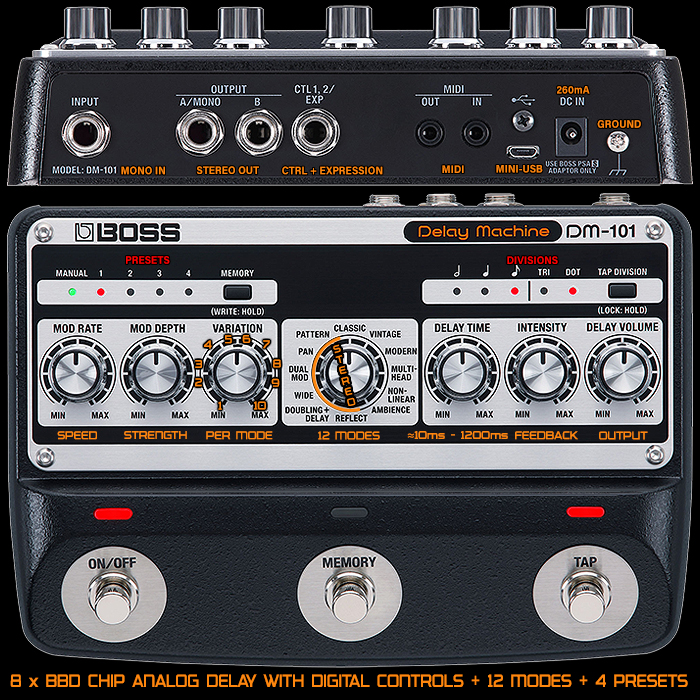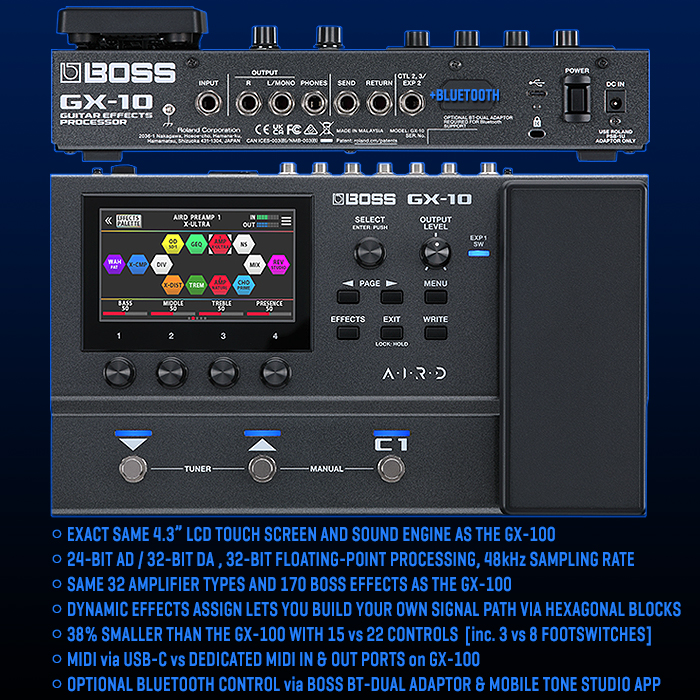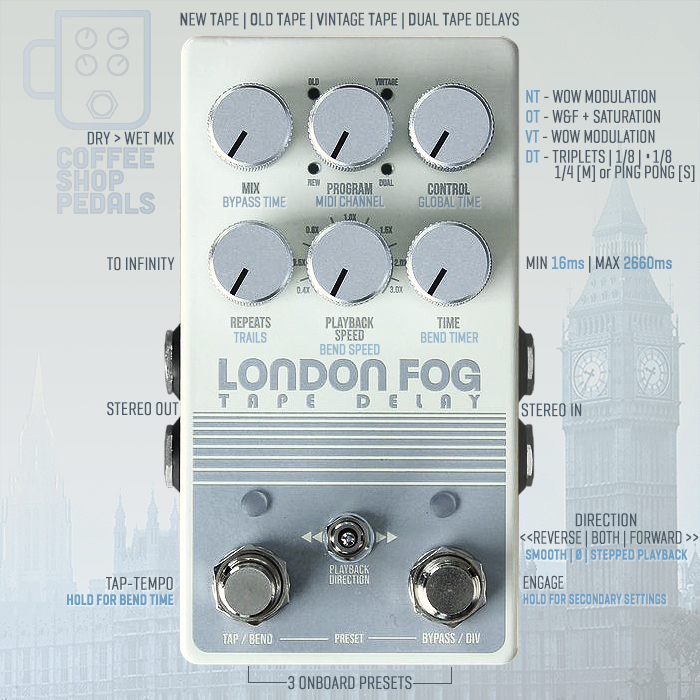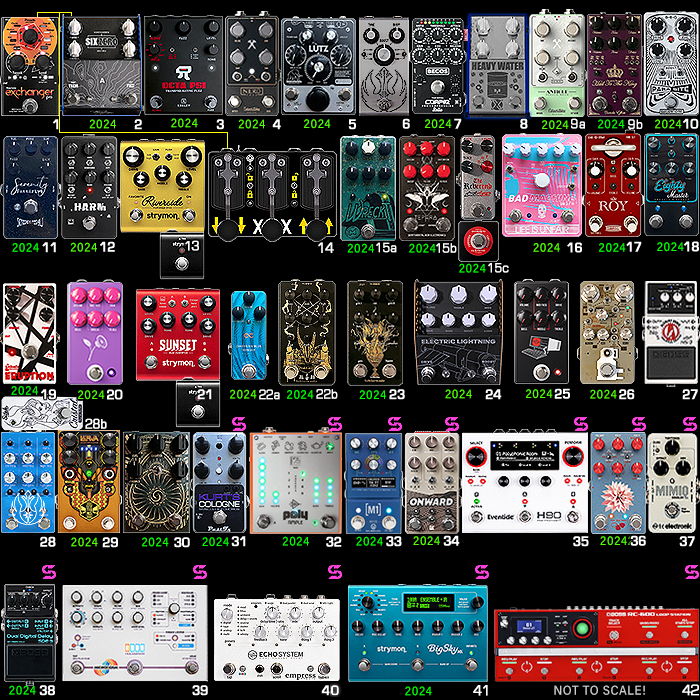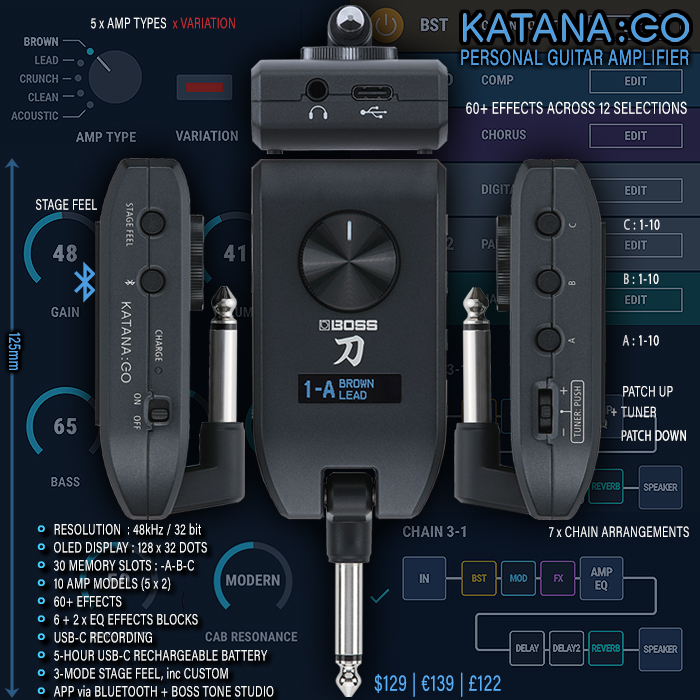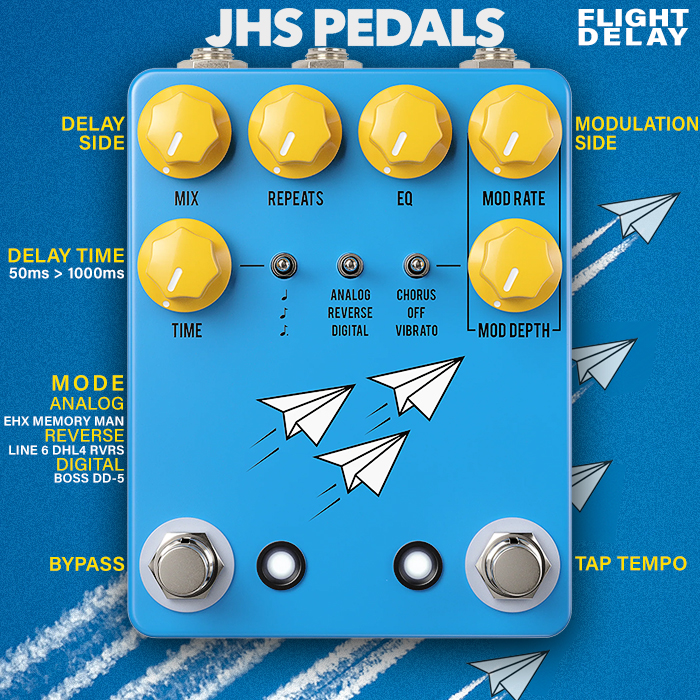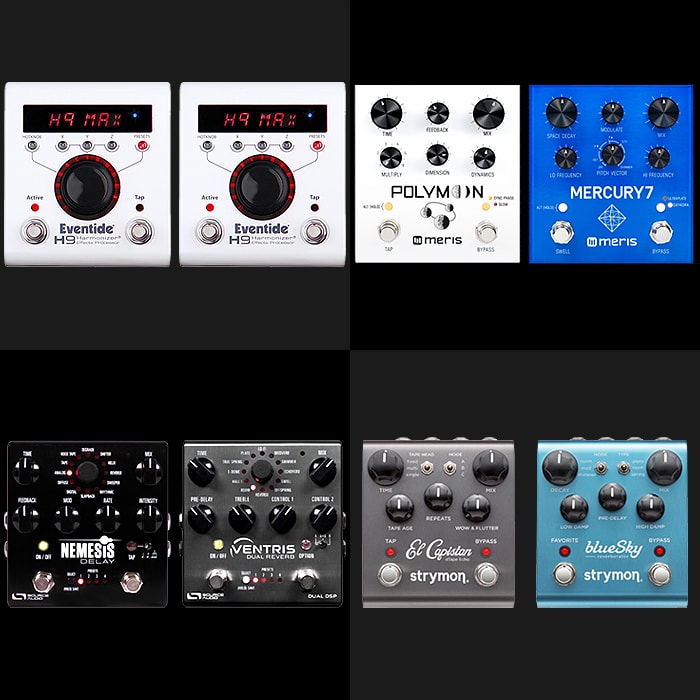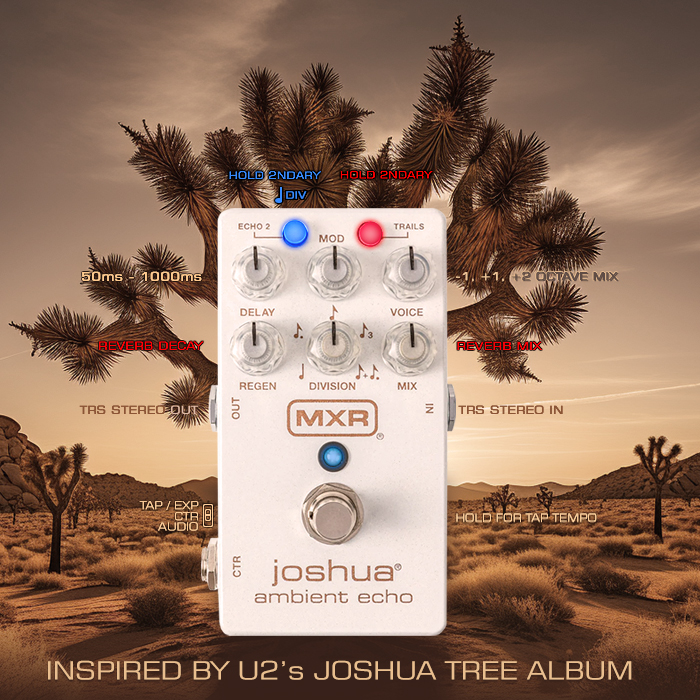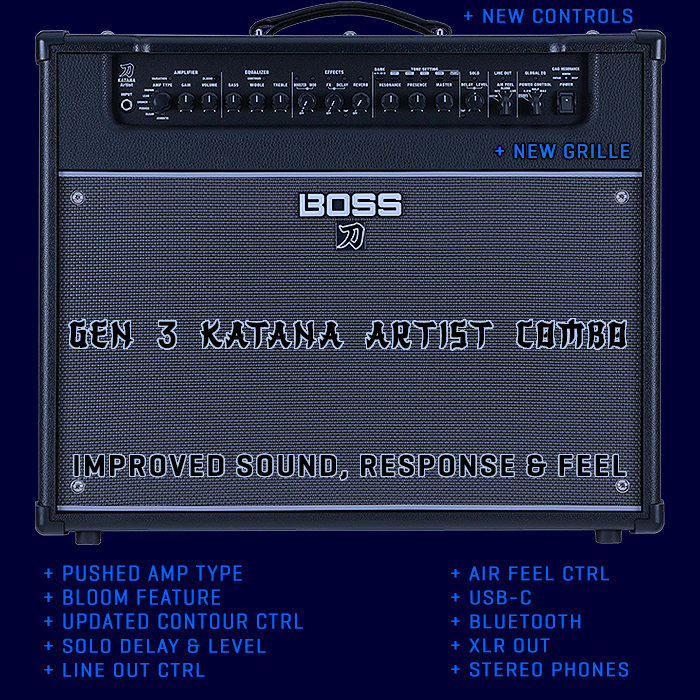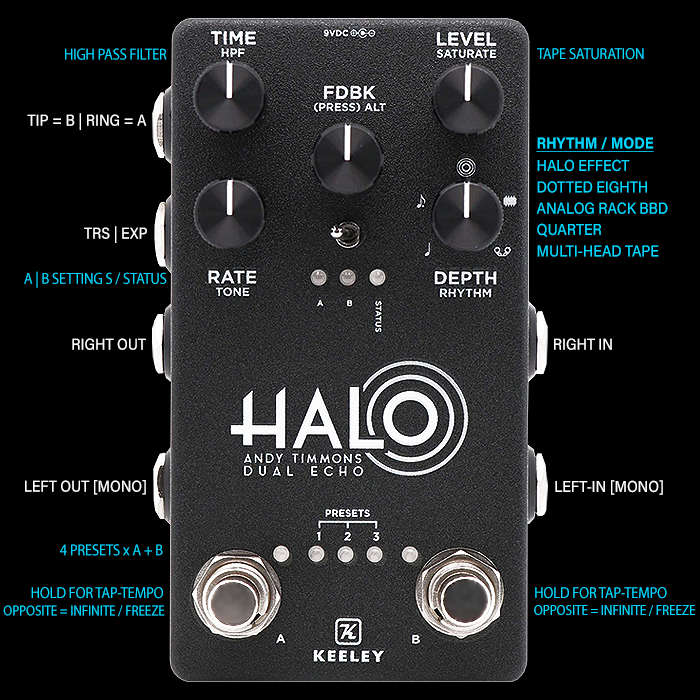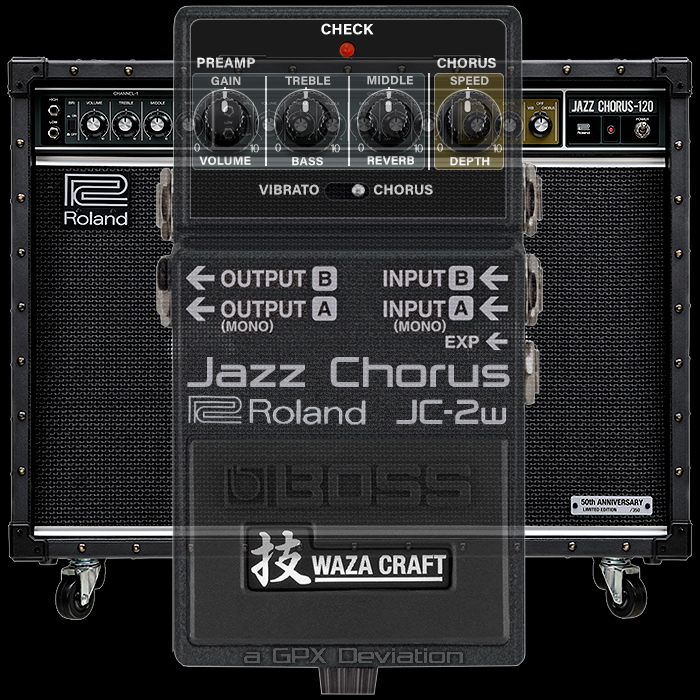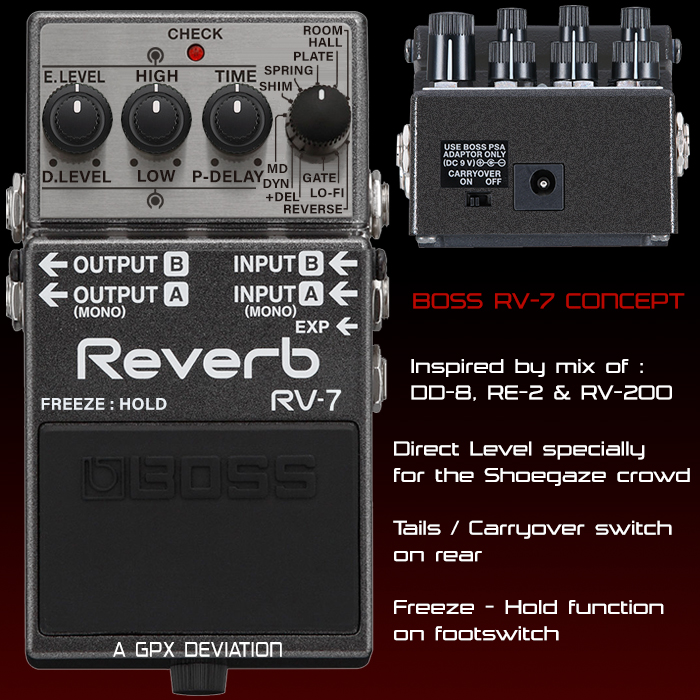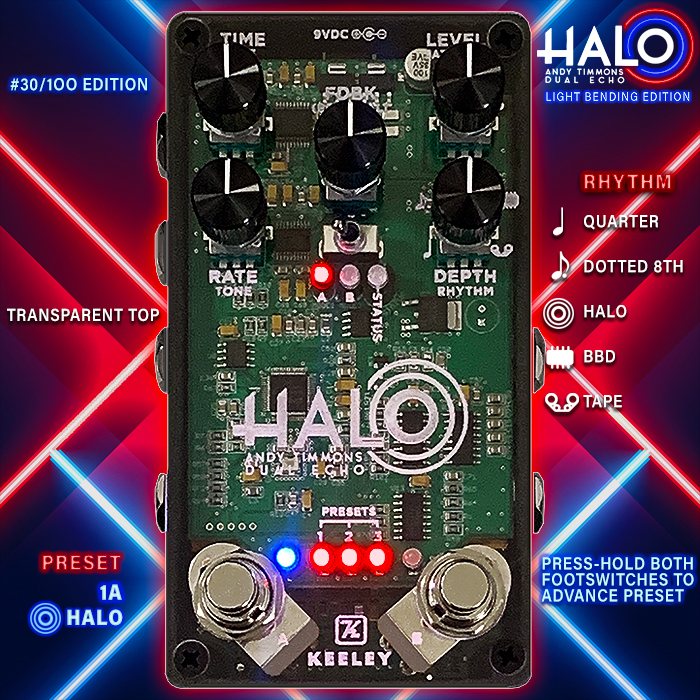Boss shrinks down its excellent SDE-3000 Dual Digital Delay to compact SDE-3 proportions - featuring smart Offset function and panning stereo output
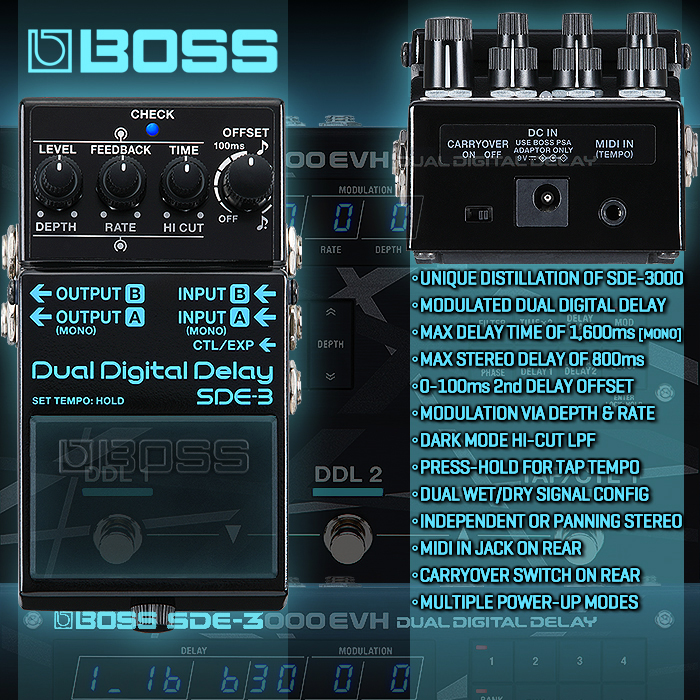
I still love my SDE-3000 EVH Delay Workstation unit - that combination of pristine digital delay and uniquely flavoured modulation just sounds superb - and you can cover EVH and Andy Timmons delay patterns with ease. A significant advantage of the SDE-3000 is the precise digital screen - where you can easily set delay values in Milliseconds or Beats Per Minute - in actual numerical integers.
While the controls of the SDE-3 are much more analogue in their nature - and need to be guided by ear, by intuition, and the force! There’s no connected app here to allow you to input those precise intervals - while it does sync to a Midi Clock - so you can control the Tempo element with a higher degree of accuracy - most everything else is by feel!
Controls : Level / Depth, Feedback / Rate, Time (Max 800 [Stereo] / 1600 [Mono]) / Hi Cut, Offset : Off > 100ms : Eights : Dotted Eights, Hold Footswitch to enter Tap Tempo, Carryover : On/Off on rear, Midi In (Tempo).
The control interface is really elegant here consisting of 3 dual concentric knobs - which cover two parameters each, and then the larger Offset / Divisions knob, which we will cover in more detail below.
It’s important to say that the modulation intensity here ramps up a lot quicker on this device than its bigger sibling - and with the modulation dials at noon (Depth & Rate) it already sounds really warbly. For my preferred settings I actually dial the Rate all the way back, and have the Depth set to 10 o’c - that sounds amazing in my rig. Also the self-oscillation comes in fairly rapidly in the second hemisphere of the Feedback dial.
For my preferences I have - Level @ 1 o’c, Feedback @ Noon, Time @ 9 o’c (c. 200ms), Depth @ 10 o’c, Rate @ Min, Hi Cut @ Min, Offset @ c. 50ms (9 o’c) or Dotted Eighths.
It can’t really compete with the firepower of its larger sibling - but it retains most of the key parts that made the SDE-3000 such a great sounding delay. Holding down the switch for a few seconds engages Tap Tempo mode - and then you hold it in a similar way to exit that input stage. I always tend to tap 3 times - while it’s supposed to work with 2 - but can seem a little laggy at times - but that’s probably just me!
I was able to get up and running in no time at all really. I initially didn’t quite get the entirety of the Offset control - but it’s really just the fist half that is fully variable - and then you have separate Eighth and Dottet Eighth positions as marked on the dial - there are no ’in-between’ settings between those extremes - more of that below!
Controlling Time and Offset
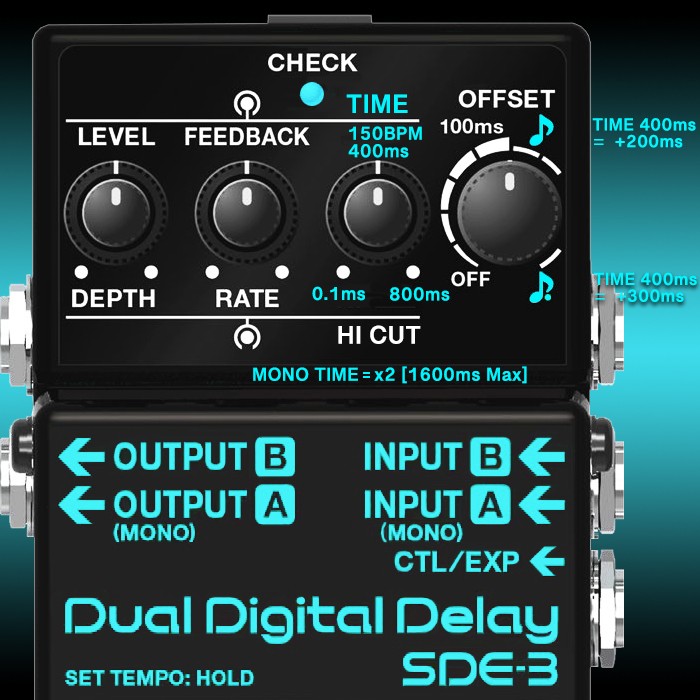
Here we focus on the main Timing dials - which require a litter further explanation.
For Mono operation - you can input to A, and output to B for a maximum 1600ms Delay Time, if you go A to A it's the same 800ms as for Stereo Output. I've marked the dial for the core 0.1ms > 800ms range - where I'm sure it's not exactly linear, but I've marked the mid-way point as 400ms - as that's what the manual refers to a lot.
Such that Time set to 800ms and Offset at Eights, the Offset channel is further delayed by 200ms, where the Dotted Eight Division is applied the interval shifts to 300ms delayed beyond the A path - so the A path is 1:1 with the Time value, and the B path is offset by 0-100 Variable, and then 200ms and 300ms per our examples.
By dialling in slightly different Offsets you can get some really quirky off-beat rhythms going, but where circa 9 o'c on the Offset Range - or half way sounded best to me, also the Dotted Eighth sounds fantastic.
Matt Knight was instrumental in setting the scope for the Offset function of this pedal - and it's for sure a really smart execution for this smaller form factor.
For you Andy Timmons fans - where his Halo Dual Echo settings have one delay line at dotted eighth 375ms, and the other at quarter note 500ms - You would need to set that up slightly differently and rather more approximately on the SDE-3. You get really close with the Time control set to 500ms (around 1-2 o'c) - that is your quarter note, and then you set the Offset to Dotted Eighth. There are differences too - in that the Halo Echo is created sequentially / in series, while for the SDE-3 the Dual Delay is of course in Parallel. Still sounds pretty great though!
The 3 Power-Up Modes
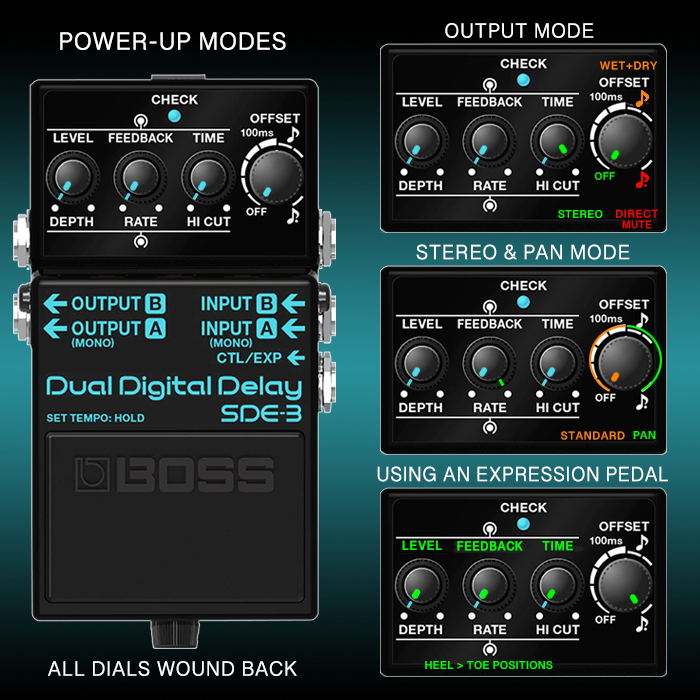
This is one aspect of Boss's compact pedals that desperately needs improving - the Power-up Modes are about as clunky as you can get - where you first need to power off the pedal, then wind back all the controls, and disconnect the input lead. Then you power up, insert the input lead, and move the appropriate dial to the extremity of its range to set the mode - where you then adjust the other appropriate control/s.
For Output Mode it's the Time control, for Stereo & Pan it's the Rate control, and for Expression setup it's the Offset control that set which Mode you're on.
OUTPUT MODE
Set the Time control to Max, and then you have 3 settings via the Offset knob - Off is Stereo, Eighth is Wet+Dry, and Dotted Eight is Direct Mute.
STEREO & PAN MODE
Set Rate control to Max, and then the first half of Offset is Standard Stereo, and the second hemisphere is Stereo Panning - where each delay alternates across Left and Right channels.
EXPRESSION PEDAL MODE
Wind the Offset control to Max, and then you can set Heel and Toe positions for each of Level, Feedback and Time.
I've suggested there needs to be an additional 'Alt' switch or button - so you don't need to do all that winding back of dials and removing and plugging cables back in again. It's actually not too bad on the SDE-3 - as most of those are setup modes for ongoing operation. While on the SL-2 Slicer it's super annoying as you really want more ready access to the output modes - where on the SL-20 model there is an external control for that.
Strymon is notorious for its power-up modes - but for those you don't need to wind back all the dials or extract and plugin the main input patch cable
Key Features and Specs

Classic Roland SDE-3000 Digital Delay sounds in BOSS compact pedal form
- Unique BOSS circuitry authentically recreates legendary 1980s Roland SDE-3000 Digital Delay effects
- Create immersive stereo effects using Offset to fine-tune the relative time difference between dual delays
- Advanced stereo operation with independent channel and panning modes
- Specify wet/dry signal configuration of both outputs
- Explore SDE-3000-style modulation with dedicated Depth and Rate knobs
- Add warmth and character to delay repeats using Hi Cut filter
- Access tap tempo function with onboard switch
- Connect external footswitch for expanded real-time control
- Adjust multiple parameters simultaneously using an expression pedal
- Carryover On/Off switch for optional effects tail
- MIDI In jack provides MIDI clock tempo synchronization
- Maximum delay time of 1,600ms [Mono A to B Output]
- BOSS five-year warranty
- Sample Rate : 48kHz
- AD Conversion : 24 bits + Adaptive Focus method
- DA Conversion : 32 bits
- Alkaline Battery Life : 4.5 Hrs in continuous use
- 9V DC [-] Power Supply, 75mA Current Draw
- Dimensions : 73 (W) x 129 (D) x 59 (H) mm
- Weight (inc. 9V Battery) : 450g
- MAP / RRP : $219 / €199 / £169
Demos



















